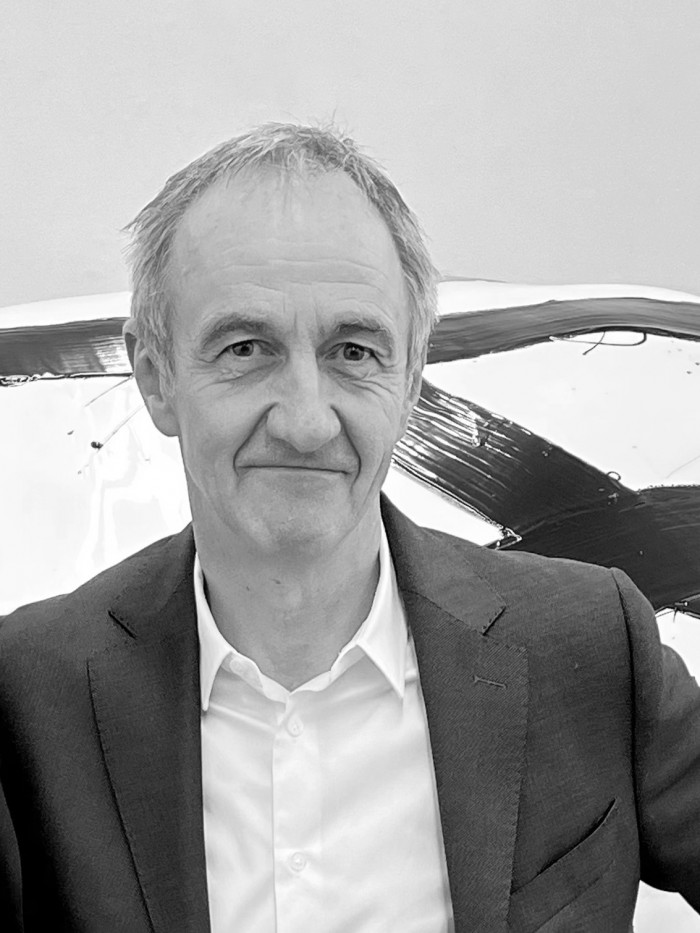Wilhelm Mundt
Sculpture and Photography
Wilhelm Mundt
Sculpture and Photography

Wilhelm Mundt began working on the Trashstones group of sculptures in 1989. The group is the conceptual and formal anchor point of his work, referred to in installations, photographic works, drawings and video works.
Taking the production residues from his studio as the starting point, Mundt, in a labour-intensive process using the force of his own physique, compresses the matter into lumpy forms weighing up to a ton. In a series of elaborate steps, these material cores are then encased inside a solid shell of glass fibre, coloured synthetic resin, bronze or aluminium. The Trashstones’ formative interiors, the materials as well as their metaphorical content, remain obscured from view by their biomorphic outer form. Each piece is unique and marked with a three-digit sequential number, beginning with 001, to reference their serial production processes.
With their immediately sensual form, combining aesthetics with ethics, irony with seriousness, the sculptures address questions of sustainability. The Trashstones can thus be read as cryptic commentary on pressing ecological issues, but also as a further radical development of an abstract sculpture that sees itself inspired by artists such as Hans Arp or Barbara Hepworth. In the group of works Trashstones, Wilhelm Mundt juxtaposes industrial manufacturing processes and function-dependent form inventions with an autonomous artistic framework of action.
In the Trashstone photographs, Mundt shows the forms in their original size. Their voluminous physicality, however, appears on the white surface of the picture like a black hole. All that remains of the sculpture’s original volume is the fine line of the lower edge’s surface on the work’s contoured shadow.
Works by Wilhelm Mundt have been exhibited at the Kunstmuseum in Bonn, Arp Museum Bahnhof Rolandseck in Remagen, Fondation Villa Datris in L’Isle-sur-la-Sorgue, the Royal Museums of Fine Arts of Belgium in Brussels, Lehmbruck Museum in Duisburg, and the Museum Kunstpalast and K20 Grabbeplatz, both in Düsseldorf. Mundt’s work can be found in the permanent collections of the Kunstmuseum St. Gallen in Switzerland, the Margulies Collection in Miami, Lehmbruck Museum Duisburg, and in the University of Bayreuth; they are also in corporate art collections of, among others: Munich RE Reinsurance Company, BNP Paribas bank and the energy company Vestas Aarhus.
Wilhelm Mundt was born in Grevenbroich, Germany, in 1959 and lives in Rommerskirchen in North Rhine-Westphalia. He holds a professorship for sculpture at the Hochschule für Bildende Künste (HfBK) Dresden.